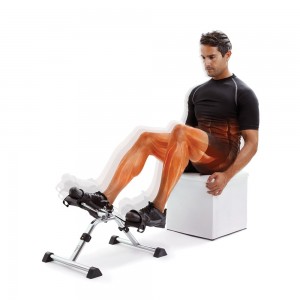The History of Exercise and Body Training
Physical fitness has been a driving force since the dawn of mankind. With our original ancestors not only needing to hunt and gather for survival, but also to defend their homes and families from predators. Even though in this modern age we are no longer driven by the same necessities, we understand that keeping fit is still a vital for our general health and well being. As Marcus Tullius Cicero stated, back in 65 BC, “It is exercise alone that supports the spirits, and keeps the mind in vigor.”
Even as we evolved out of caves and huts, gradually becoming more civilised, evidence shows that fitness and body training remained an important aspect of many ancient cultures. Ancient civilisations in China and India, who believed that inactivity lead to specific diseases, developed forms of Kung Fu and Yoga, to both train the body and train the mind.
Between 4000 – 250 BC, many different cultures believed that maintaining a fighting fit country was integral to survival in the face of war. Countries such as Greece, Italy, Germany and Persia had their men fully trained in combat and physical fitness by the time they were 16. Many of the Greek woman were also trained and in peak physical condition. They used variations of weight and resistance training as well as forms of gymnastics to keep themselves fit, strong and agile.
In the late 1700’s American presidents started to acknowledge the importance of a fit and healthy country, with presidents such as Benjamin Franklin and Thomas Jefferson promoting fitness. Theodore Roosevelt even encouraged the American people by setting an example himself. By the 1960’s President Kennedy became involved in the promotion of health and fitness by writing articles on it’s importance and founding youth fitness programs. In 2003 former professional bodybuilder Arnold Schwarzenegger became the 38th Governor of California, again leading by example.
Francois Henri ‘Jack’ LaLanne, dubbed the ‘Godfather of Fitness’, opened one of the American nations first fitness gyms in 1936 and was also the inventor of many exercise machines including the Smith machine (a squat safety machine) leg extension machine and a cable-pulley device. He also taught elderly and disabled people, encouraging them that it would enhance their strength. Arnold Schwarzenegger credited Jack LaLanne as being “an apostle for fitness” because he inspired “Billions all over the world to live healthier lives”.

In the years leading up to now, our understanding of the human body and our need to eat well and exercise regularly has only improved. With this increased understanding comes a new age of refined fitness based equipment that is designed to target specific areas of the body in the safest and most effective ways. We have also developed equipment that is designed to protect our body, and encourage maximum muscle and strength development, whilst catering for and protecting existing or past injuries. We know have a keener understanding of the importance of protecting our joints, the necessity of warming up and warming down, and the benefits of massaging muscles in order to stimulate circulation and reduce tension and pain.
We have come a long way from lifting rocks to train and keep fit and strong, and technology is only continuing to rapidly advance. With the availability of VR spin classes and specialised wearable technology, who knows what the future has in store for us and the world of fitness?
Why not join in with the History of Exercise conversation in our 66fit LinkedIn group? You can also find us on Facebook as 66fit Australia, 66fit UK and 66fit Deutschland along with Twitter and G+. Come and meet us in person at the NEC Birmingham for either Leisure Industry Week (LIW), 22nd and 23rd September 2015, Stand No: Hall 4/C29 or the Occupational Therapy Show on the 25th and 26th November 2015.